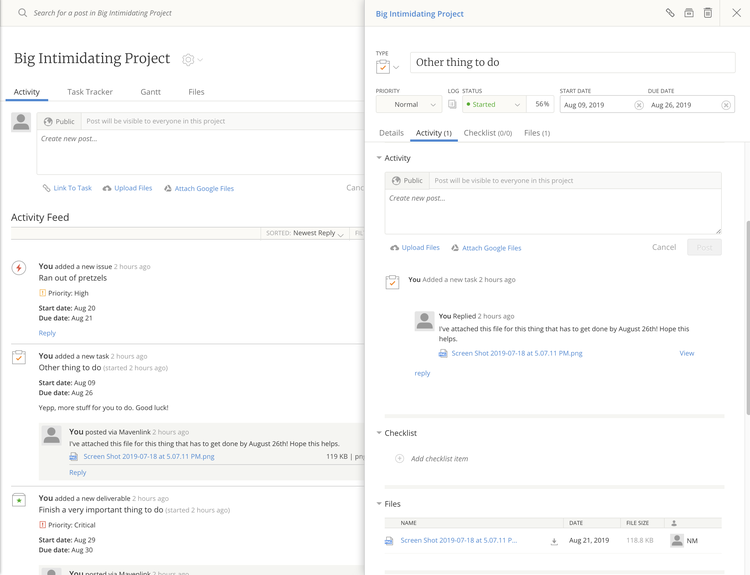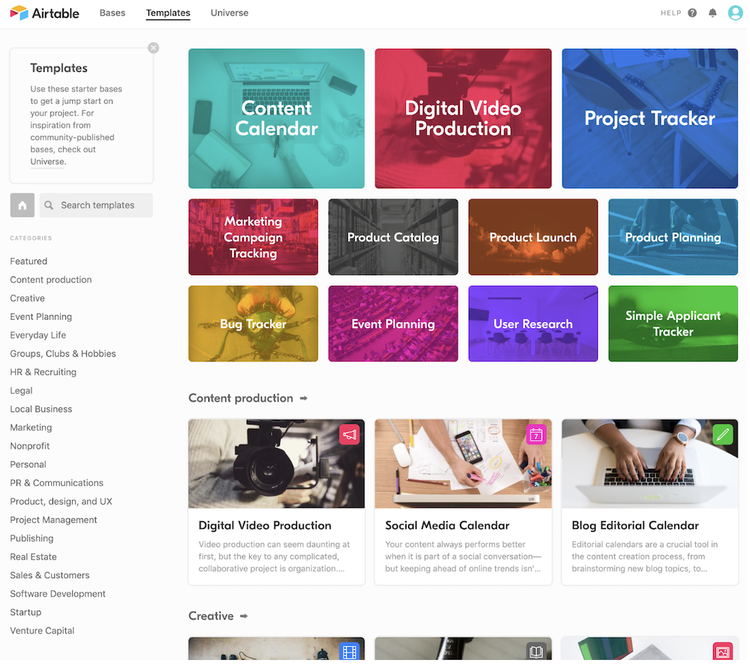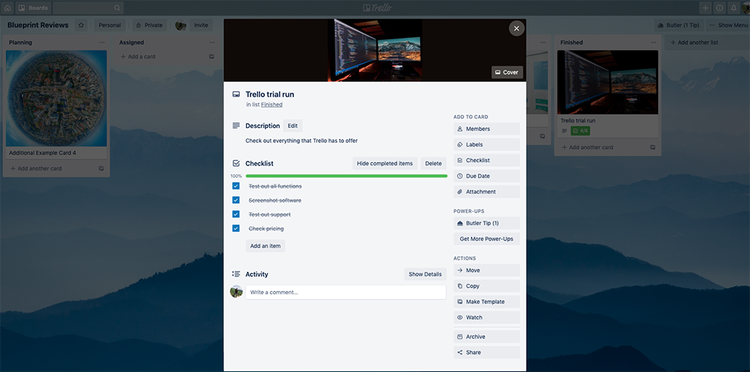

Image source: Getty Images
You’re a newly minted IT project management professional, and you’ve just been assigned your first project.
Your team will develop a software solution for a small base of users — specifically, an in-house inventory system for a local pharmacy. They’ve weighed the pros and cons of off-the-shelf vs. custom software and determined that they want their inventory management system designed according to how they work.
There are several project management methodologies your team can use to develop the software, and waterfall is one of them.
In this guide, we’ll talk about the waterfall model, the five waterfall methodology phases, and how waterfall development differs from agile project management.
Overview: What is the waterfall methodology?
Waterfall project management follows a sequential or linear process flow in which a team completes the project management steps in stages, one stage after another, pretty much in the same way water cascades from the top downward in a waterfall.The waterfall method is also known as the traditional approach to project management.
There are three key principles that govern the waterfall approach.
Principle 1: Sequential project structure
With the waterfall methodology, project activities are broken down into strictly sequential phases.
Once a phase is complete, it will be difficult or extremely expensive to make changes to it. Teams may have to start from the very beginning to inject changes into the project.
Principle 2: Low degree of customer involvement
Client participation in waterfall projects is usually very low.
After the requirements phase (more on this later), customer involvement is limited to certain milestones, such as status meetings, reviews, and approvals.
Principle 3: Strong project documentation
Because the waterfall methodology advocates the so-called “big bang approach” instead of the “piecemeal effect” that’s common among agile projects, it requires lots of details upfront.
These details include the deliverables criteria, the specific skills needed to complete the project, the project’s timeline, and how the team plans to tackle the project from beginning to end. These are documented and implemented throughout the project life cycle.
How does the waterfall methodology work?
Waterfall software development follows five distinct phases or stages.
Complex waterfall projects may need additional phases, but no matter the number involved, teams can’t begin the next phase until the previous stage is fully complete. Each stage usually follows formal exit guidelines that include project stakeholders signing off.
The names of the waterfall stages may vary, but they’re typically referred to and defined as follows:
Step 1: Requirements
Your team gathers client and end-user expectations so you can determine measurable project requirements. Project managers should spend a lot of time on this stage, as breezing through it just so the project can start immediately can mean you end up overlooking vital information.
When requirements gathering is inadequate, the final product or solution may not coincide with what the client is looking for.
Step 2: Design
This is also referred to as the “analysis” stage in which your team will evaluate the requirements gathered in the previous phase to create specifications for what the final product would look like, as well as the steps required to get there. It’s also when you should flesh out the project management plan for each of the succeeding phases.
Step 3: Implementation
At this stage, your team should carry out the details of the project plan. In software development, this is when the actual coding begins. Typically, the software system is divided into small segments called units, which will later be integrated to form the completed product.
Step 4: Verification
Also known as the “testing” phase, this is the point at which your team should test the product for errors. You should complete what’s called unit testing of the individual units developed in the previous phase prior to integrating them.
Once you’ve integrated the parts, check the final product for errors to ascertain that all of the project’s requirements have been met.
You can also carry out optional user testing in which users test-drive the completed software before it’s deployed in an organization or distributed to the general population.
Step 5: Maintenance
You should begin the maintenance stage as soon as customers start using the product in the real world.
This involves modifying the product or its individual components based on user feedback, requests from the client, or system flaws not detected during the verification phase. The purpose is to improve the product’s overall performance.
Waterfall methodology vs. agile methodology: What’s the difference?
Specific project management methodologies have specific uses, so it’s difficult to say if waterfall methodology or agile is better.
In the end, whether you use waterfall or agile largely depends on the type of project you’re working on and the experience of your project team.
When to use waterfall
As discussed above, the waterfall methodology is strictly linear in nature.
Teams can’t make changes to a completed phase, which is why projects that rely on constant user feedback and multiple development cycles to create the final deliverable are better off using a different approach (such as agile).
Use the waterfall method when:
- The project’s requirements are well-defined and can be gathered before work on the project begins.
- The project’s scope is well-understood by all the parties involved.
- The client or project sponsor prefers limited involvement in the project, particularly after the requirements phase.
- The project’s budget and timelines are fixed and immovable.
Bottom line: Waterfall benefits projects with constrained budgets and timelines as well as fixed scope and requirements.
When to use agile
As a project management technique, agile breaks down large projects into smaller, more manageable chunks. The team then performs the work in iterations (single development cycles) or sprints (timeboxed periods when an agile team completes a set amount of work).
This approach allows teams to quickly adapt to changing requirements and release product prototypes and enhancements fast.
It’s best used when:
- Project requirements aren’t clear-cut in the beginning. Deliverables evolve through user testing and feedback.
- The client wants a working product released as soon as possible.
- Customer involvement is high.
Bottom line: Use agile when, in the beginning, you’re unsure what needs to be created and if customers are willing to collaborate with the project team throughout the process to ensure the final product aligns with their needs.
Best project management software for the waterfall model
The best waterfall projects are a product of teamwork, and for teams to continually perform their best, they must be equipped with the right collaboration tools.
Project management software solutions come with features that allow teams to effectively communicate, stay organized, and better manage tasks, timelines, and risks.
Below are just a few of the project management systems The Ascent has evaluated and reviewed. Here we’ve identified some of the specific features that make them a good fit for waterfall projects.
1. Mavenlink: Task management
Making sure tasks are completed on time is one of several core responsibilities teams must stay on top of.
With Mavenlink, you can assign and track tasks, prioritize them, set milestones, visually monitor how they’re progressing in a Gantt chart, and provide team members with global or project-specific visibility, depending on their roles.

Mavenlink’s dashboard lets you monitor team activities and task statuses. Image source: Author
To see if Mavenlink is the task manager for your project team, take advantage of its 10-day free trial offer.
2. Airtable: Project templates
With project templates, you don’t always have to start from scratch when planning your projects. Airtable has a full library of project management templates you can leverage to get your project up and running in no time. Select the template that best fits the type of project you’re working on, and you’ll be ready to get started.
When working with templates, an understanding of the project management basics — specifically, the different project manager responsibilities — is critical to streamlining processes and maximizing efficiency.

Simply select the project template you want to use from Airtable’s template library to get started. Image source: Author
To start using Airtable, all you need to do is sign up. It offers a basic package that’s free for life.
3. Trello: Workflow visibility
It’s the project manager’s responsibility to keep things moving as envisioned, but with so many project aspects to keep track of — i.e., budgets, scope, timelines, change requests, communication strategies, etc. — things can easily fall through the cracks. With an entire team keeping tabs on what’s going on, a project has a better chance of progressing according to plan.
Trello’s kanban boards provide complete visibility into the different parts of a project and their progress. If you need to move things around and make adjustments, Trello lets you do that with drag-and-drop ease. Trello offers a free-forever basic plan.

Trello is easy to use and requires little to no training. Image source: Author
Choose the methodology that’s right for your project
The waterfall methodology, although criticized for its rigidity, is a project management approach that has stood the test of time.
It’s not always the right solution, but understanding its strengths and weaknesses will help you determine when to use it and when to turn to other project management techniques.